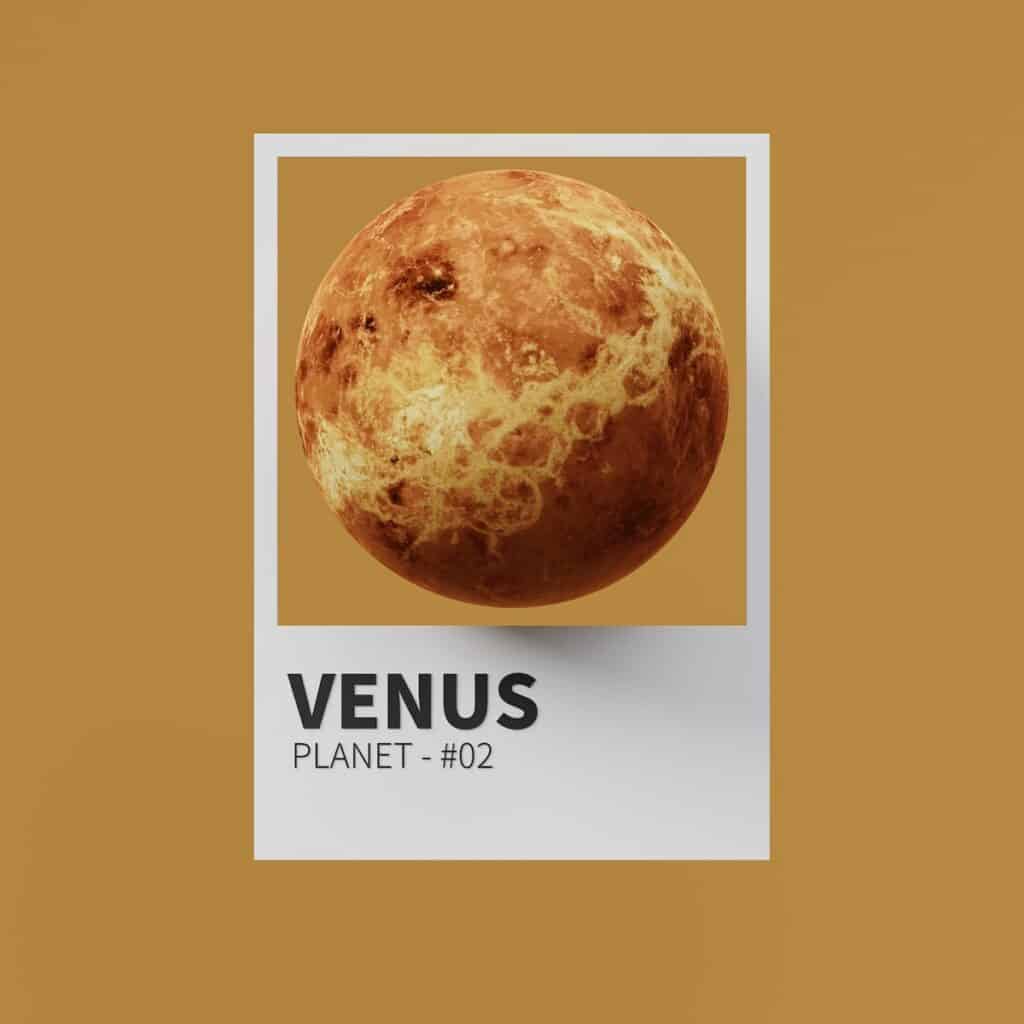Plus you can learn more about what’s in our Solar System with our Top 10 Facts on the Sun and the Moon; the planets Earth, Mercury, Mars, Jupiter, Saturn, Uranus and Neptune and the dwarf planet Pluto.
Welcome to the fascinating world of Venus! This planet is the second closest planet to the Sun and is sometimes referred to as Earth’s twin because it is similar in size, mass, and composition. We’re going to explore the Top 10 Facts about Venus. From its unique atmosphere to its extreme temperatures, there is much to learn about this mysterious planet. So, let’s get started!
1. Venus is the second closest planet to the Sun.

Mercury is the innermost planet in Earth’s solar system followed by Venus.
2. It is the hottest planet in the Solar System.
Even though Mercury is the planet closest to the Sun it isn’t as hot as Venus.
Venus is 471°C – that’s hot enough to melt lead.
3. There are yellow clouds on Venus.

Venus has a thick, toxic atmosphere filled with carbon dioxide. It’s difficult to see the surface of Earth because it is covered in thick, yellowish clouds of sulphuric acid that trap heat.
4. The pressure on Venus would crush you.
Venus has crushing air pressure at its surface – more than 90 times that of Earth – similar to the pressure you’d encounter a mile below the ocean on Earth.
That means if you stood on it you’d be crushed. That’s if the heat didn’t get to you first.
Learn more about space in the video below.
5. Venus is the only planet in our Solar System that rotates clockwise.
Venus rotates on its axis backward, compared to most of the other planets in the solar system that rotate anti-clockwise. This means that, on Venus, the Sun rises in the west and sets in the east, the opposite to what we experience on Earth.
This is most likely because at some point it was hit by a large object which changed it’s rotation.
6. A day on Venus lasts 243 Earth days.
It takes Venus 243 Earth days to rotate once on its axis. That’s the longest rotation of any planet in the Solar System and means a day on Venus lasts the equivalent of 243 Earth Days.
7. A year on Venus is shorter than a year on Earth.
It takes Venus 224.7 Earth days to complete an orbit of the Sun meaning a year lasts 224.7 Earth days.
Weirdly that means a day on Venus is longer than a year on Venus.
8. You can see Venus at night.

Venus is the third brightest natural object in the night sky after the Moon and The Sun.
The clouds of sulphuric acid in Venus’ atmosphere make it reflective and shiny. This means you can see it amongst the stars in the night. Have you ever seen it?
9. Venus is named after a Roman God.

The Romans believed that gods and goddesses were in charge of everything on Earth.
Venus was named after the Roman goddess of love and beauty. It’s the only planet named after a female god. You can see a statue of the Goddess Venus above.
10. Venus was first observed through a telescope in 1610.

The first person to look at Venus in a telescope was the astronomer Galileo Galilei. He took the first accurate observations of the planet in 1610.
However humans knew about Venus for a long time before that due to it being visible in the night sky.
Ancient Egyptians thought that Venus was actually two separate objects – a morning star and a separate evening star.
Let’s keep learning with our Top 10 Facts about Space and Top 10 Facts about the Solar System. Plus you can learn more about what’s in our Solar System with our Top 10 Facts on the Sun and the Moon; the planets Earth, Mercury, Mars, Jupiter, Saturn, Uranus and Neptune and the dwarf planet Pluto.
Send us your favourite facts!
Is there something we've missed? Got a fact you're dying to tell us? Submit it below and we could use it on a future Top 10 Facts page!
Remember to always ask an adult before filling out forms online.



